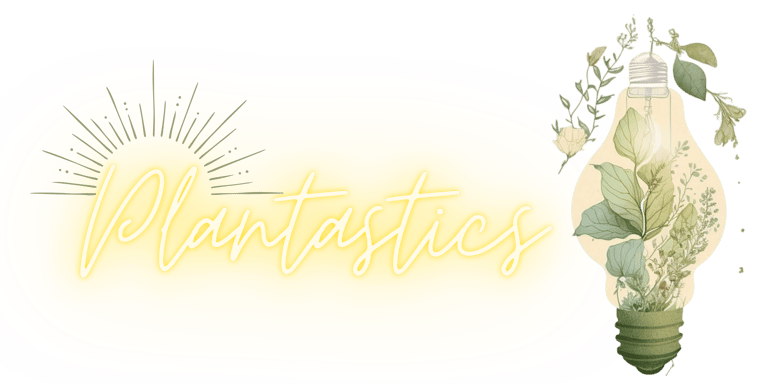How to Transition to a Sustainable Lifestyle: A Beginner’s Guide 🌱
In a world facing increasing environmental challenges, transitioning to a sustainable lifestyle is no longer a choice; it’s a responsibility. But let’s be honest—starting the journey toward sustainability can feel overwhelming. With so much information out there, it’s hard to know where to begin. That’s where this guide comes in. At Plantastics, we believe that living sustainably doesn’t have to be daunting. It’s about small, intentional changes that lead to a greener, more harmonious life.
By the end of this article, you’ll have a clear, actionable roadmap to help you transition to a sustainable lifestyle—while discovering the profound impact your choices can have on the planet, your community, and your own well-being.
What Does Sustainability Really Mean?
Before diving into the how, let’s clarify the what. Sustainability is about meeting the needs of the present without compromising the ability of future generations to meet their own needs. It’s a balanced approach to living—minimizing harm to the environment while nurturing social and economic well-being.
But it’s more than just recycling or using less plastic. Sustainability touches every aspect of life: from the food we eat to the energy we use, the clothes we wear, and the waste we create. It’s a mindset—a commitment to rethink our habits and live in alignment with nature’s rhythms.
Why Choose a Sustainable Lifestyle?
It’s easy to feel disconnected from the planet’s larger environmental issues, but the reality is that our everyday choices have ripple effects. Here are just a few compelling reasons to embrace sustainability:
Combat Climate Change:
Every small action—like reducing energy consumption or eating plant-based—contributes to lowering greenhouse gas emissions.Preserve Natural Resources:
By using resources more mindfully, we help protect the planet’s finite supplies of clean water, fertile soil, and forests.Promote Social Justice:
Sustainable practices often support fair labor, ethical business practices, and equitable access to resources.Improve Personal Well-Being:
A sustainable lifestyle is often healthier, simpler, and more fulfilling, connecting us to what truly matters.
The First Steps Toward a Greener Life
Transitioning to a sustainable lifestyle doesn’t require a complete overhaul overnight. It’s a journey, and like any journey, it begins with small, intentional steps. Here’s how to get started:
1. Start with Awareness: Understand Your Footprint
Before making changes, you need to understand where you stand. Use a carbon footprint calculator to measure your environmental impact. These tools can help identify areas where your actions have the greatest effect—whether it’s energy use, diet, or transportation.
Reflect on Consumption:
Keep a diary for a week, tracking everything you consume, from food to electricity. Awareness is the first step toward change.
2. Rethink Your Diet: Go Plant-Based
The food we eat has a significant impact on the environment. Animal agriculture is a leading cause of deforestation, water pollution, and greenhouse gas emissions. Transitioning to a plant-based diet—even partially—can make a world of difference.
Start Small:
Try "Meatless Mondays" or incorporate more plant-based meals into your week.Discover Plant-Based Alternatives:
From oat milk to jackfruit "pulled pork," there are delicious substitutes for almost every animal product.
Fun fact: A single person switching to a plant-based diet can save approximately 200,000 gallons of water per year!
3. Minimize Waste: Embrace the 5 R’s
You’ve heard of the 3 R’s (Reduce, Reuse, Recycle), but let’s add two more: Refuse and Rot. Together, they form the foundation of a low-waste lifestyle:
Refuse: Say no to unnecessary items like plastic straws, freebies, or fast fashion.
Reduce: Simplify your life by buying only what you truly need.
Reuse: Invest in reusable alternatives like stainless steel water bottles and cloth bags.
Recycle: Properly sort your recyclables and educate yourself on local recycling guidelines.
Rot: Compost organic waste to create nutrient-rich soil.
Tip: Keep a small compost bin in your kitchen—it’s easier than you think!
4. Conserve Energy: Power Down
Energy efficiency is one of the most impactful ways to reduce your carbon footprint. Here’s how:
Switch to LED Bulbs: They use up to 80% less energy than incandescent ones.
Unplug Devices: Electronics draw power even when turned off (known as phantom load).
Opt for Renewable Energy: If possible, choose a green energy provider or invest in solar panels.
5. Reconnect with Nature
A sustainable lifestyle isn’t just about reducing harm—it’s about nurturing a deeper connection with the planet. Spend time in nature to cultivate gratitude and awareness.
Start a Garden: Even a small herb garden can be incredibly rewarding.
Explore Local Green Spaces: Visit parks, forests, or community gardens.
Practice Mindfulness in Nature: Notice the sounds, textures, and rhythms of the natural world.
Overcoming Common Barriers
It’s normal to face challenges along the way. Here are some common barriers—and how to overcome them:
“It’s too expensive.”
Look for secondhand items or DIY solutions.
Many sustainable habits, like conserving energy, actually save money in the long run.
“I don’t have time.”
Integrate small changes into your routine, like meal prepping plant-based lunches or using reusable shopping bags.
“What difference can I make?”
Remember, collective action creates powerful change. Your choices inspire others and contribute to a global movement.
Deepening Your Commitment
Once you’ve mastered the basics, here are ways to take your sustainable lifestyle to the next level:
Support Ethical Businesses: Research companies that prioritize sustainability and fair trade.
Adopt Minimalism: Focus on quality over quantity in all areas of life.
Advocate for Change: Use your voice to support environmental policies and initiatives.
The Emotional Rewards of Sustainability
Sustainability isn’t just good for the planet—it’s good for the soul. Many people report feeling:
More Connected: A sustainable lifestyle fosters a sense of community and interconnectedness.
Less Stressed: Simplifying life can reduce decision fatigue and bring clarity.
More Purposeful: Knowing your actions align with your values is deeply fulfilling.
Sustainable Living: A Community Effort
At Plantastics, we believe that sustainability is a journey best shared. Here’s how to get involved:
Join Online Communities: Connect with like-minded individuals on forums, social media, or sustainability blogs.
Host a Swap Party: Trade clothes, books, or tools with friends instead of buying new.
Teach and Learn: Share your experiences and learn from others’ journeys.
🌿 Your Green Journey Starts Today
Transitioning to a sustainable lifestyle doesn’t require perfection—just progress. Every small action, every mindful choice, contributes to a healthier planet and a more harmonious life. Whether you’re swapping plastic for bamboo, going plant-based, or simply turning off the lights, your efforts matter.
Explore More with Plantastics
Looking for more inspiration? Visit our blog for in-depth articles, eco-friendly product reviews, and innovative tips to make sustainability part of your everyday life.
Together, we can grow a greener future. 🌟 Let’s start today!




